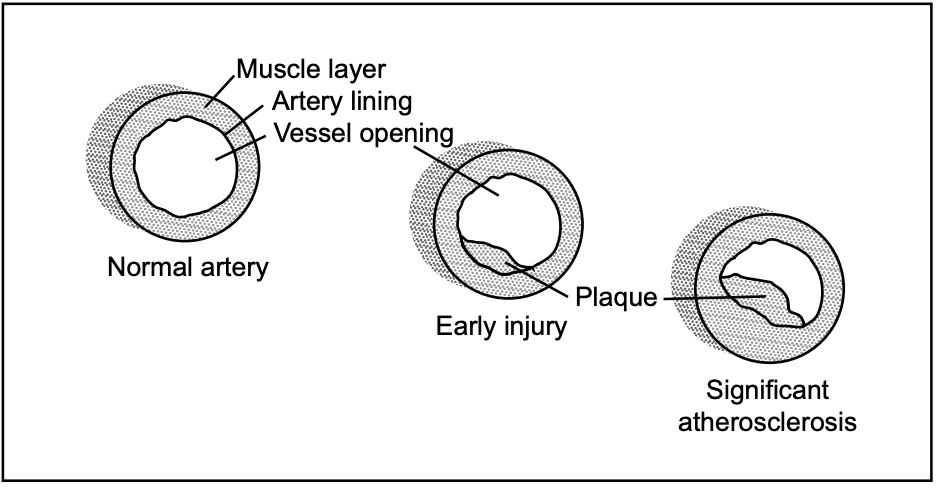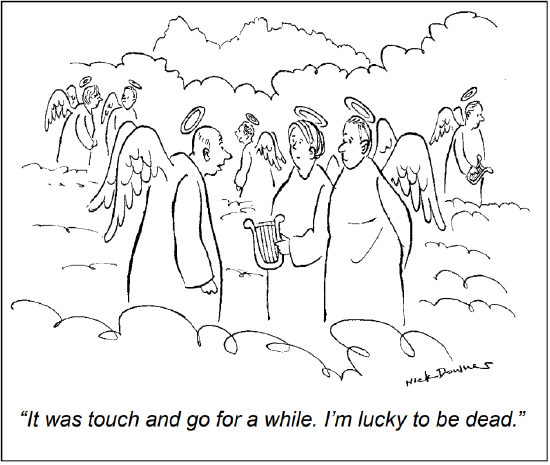8: Atherosclerosis
- Page ID
- 55508
\( \newcommand{\vecs}[1]{\overset { \scriptstyle \rightharpoonup} {\mathbf{#1}} } \)
\( \newcommand{\vecd}[1]{\overset{-\!-\!\rightharpoonup}{\vphantom{a}\smash {#1}}} \)
\( \newcommand{\dsum}{\displaystyle\sum\limits} \)
\( \newcommand{\dint}{\displaystyle\int\limits} \)
\( \newcommand{\dlim}{\displaystyle\lim\limits} \)
\( \newcommand{\id}{\mathrm{id}}\) \( \newcommand{\Span}{\mathrm{span}}\)
( \newcommand{\kernel}{\mathrm{null}\,}\) \( \newcommand{\range}{\mathrm{range}\,}\)
\( \newcommand{\RealPart}{\mathrm{Re}}\) \( \newcommand{\ImaginaryPart}{\mathrm{Im}}\)
\( \newcommand{\Argument}{\mathrm{Arg}}\) \( \newcommand{\norm}[1]{\| #1 \|}\)
\( \newcommand{\inner}[2]{\langle #1, #2 \rangle}\)
\( \newcommand{\Span}{\mathrm{span}}\)
\( \newcommand{\id}{\mathrm{id}}\)
\( \newcommand{\Span}{\mathrm{span}}\)
\( \newcommand{\kernel}{\mathrm{null}\,}\)
\( \newcommand{\range}{\mathrm{range}\,}\)
\( \newcommand{\RealPart}{\mathrm{Re}}\)
\( \newcommand{\ImaginaryPart}{\mathrm{Im}}\)
\( \newcommand{\Argument}{\mathrm{Arg}}\)
\( \newcommand{\norm}[1]{\| #1 \|}\)
\( \newcommand{\inner}[2]{\langle #1, #2 \rangle}\)
\( \newcommand{\Span}{\mathrm{span}}\) \( \newcommand{\AA}{\unicode[.8,0]{x212B}}\)
\( \newcommand{\vectorA}[1]{\vec{#1}} % arrow\)
\( \newcommand{\vectorAt}[1]{\vec{\text{#1}}} % arrow\)
\( \newcommand{\vectorB}[1]{\overset { \scriptstyle \rightharpoonup} {\mathbf{#1}} } \)
\( \newcommand{\vectorC}[1]{\textbf{#1}} \)
\( \newcommand{\vectorD}[1]{\overrightarrow{#1}} \)
\( \newcommand{\vectorDt}[1]{\overrightarrow{\text{#1}}} \)
\( \newcommand{\vectE}[1]{\overset{-\!-\!\rightharpoonup}{\vphantom{a}\smash{\mathbf {#1}}}} \)
\( \newcommand{\vecs}[1]{\overset { \scriptstyle \rightharpoonup} {\mathbf{#1}} } \)
\(\newcommand{\longvect}{\overrightarrow}\)
\( \newcommand{\vecd}[1]{\overset{-\!-\!\rightharpoonup}{\vphantom{a}\smash {#1}}} \)
\(\newcommand{\avec}{\mathbf a}\) \(\newcommand{\bvec}{\mathbf b}\) \(\newcommand{\cvec}{\mathbf c}\) \(\newcommand{\dvec}{\mathbf d}\) \(\newcommand{\dtil}{\widetilde{\mathbf d}}\) \(\newcommand{\evec}{\mathbf e}\) \(\newcommand{\fvec}{\mathbf f}\) \(\newcommand{\nvec}{\mathbf n}\) \(\newcommand{\pvec}{\mathbf p}\) \(\newcommand{\qvec}{\mathbf q}\) \(\newcommand{\svec}{\mathbf s}\) \(\newcommand{\tvec}{\mathbf t}\) \(\newcommand{\uvec}{\mathbf u}\) \(\newcommand{\vvec}{\mathbf v}\) \(\newcommand{\wvec}{\mathbf w}\) \(\newcommand{\xvec}{\mathbf x}\) \(\newcommand{\yvec}{\mathbf y}\) \(\newcommand{\zvec}{\mathbf z}\) \(\newcommand{\rvec}{\mathbf r}\) \(\newcommand{\mvec}{\mathbf m}\) \(\newcommand{\zerovec}{\mathbf 0}\) \(\newcommand{\onevec}{\mathbf 1}\) \(\newcommand{\real}{\mathbb R}\) \(\newcommand{\twovec}[2]{\left[\begin{array}{r}#1 \\ #2 \end{array}\right]}\) \(\newcommand{\ctwovec}[2]{\left[\begin{array}{c}#1 \\ #2 \end{array}\right]}\) \(\newcommand{\threevec}[3]{\left[\begin{array}{r}#1 \\ #2 \\ #3 \end{array}\right]}\) \(\newcommand{\cthreevec}[3]{\left[\begin{array}{c}#1 \\ #2 \\ #3 \end{array}\right]}\) \(\newcommand{\fourvec}[4]{\left[\begin{array}{r}#1 \\ #2 \\ #3 \\ #4 \end{array}\right]}\) \(\newcommand{\cfourvec}[4]{\left[\begin{array}{c}#1 \\ #2 \\ #3 \\ #4 \end{array}\right]}\) \(\newcommand{\fivevec}[5]{\left[\begin{array}{r}#1 \\ #2 \\ #3 \\ #4 \\ #5 \\ \end{array}\right]}\) \(\newcommand{\cfivevec}[5]{\left[\begin{array}{c}#1 \\ #2 \\ #3 \\ #4 \\ #5 \\ \end{array}\right]}\) \(\newcommand{\mattwo}[4]{\left[\begin{array}{rr}#1 \amp #2 \\ #3 \amp #4 \\ \end{array}\right]}\) \(\newcommand{\laspan}[1]{\text{Span}\{#1\}}\) \(\newcommand{\bcal}{\cal B}\) \(\newcommand{\ccal}{\cal C}\) \(\newcommand{\scal}{\cal S}\) \(\newcommand{\wcal}{\cal W}\) \(\newcommand{\ecal}{\cal E}\) \(\newcommand{\coords}[2]{\left\{#1\right\}_{#2}}\) \(\newcommand{\gray}[1]{\color{gray}{#1}}\) \(\newcommand{\lgray}[1]{\color{lightgray}{#1}}\) \(\newcommand{\rank}{\operatorname{rank}}\) \(\newcommand{\row}{\text{Row}}\) \(\newcommand{\col}{\text{Col}}\) \(\renewcommand{\row}{\text{Row}}\) \(\newcommand{\nul}{\text{Nul}}\) \(\newcommand{\var}{\text{Var}}\) \(\newcommand{\corr}{\text{corr}}\) \(\newcommand{\len}[1]{\left|#1\right|}\) \(\newcommand{\bbar}{\overline{\bvec}}\) \(\newcommand{\bhat}{\widehat{\bvec}}\) \(\newcommand{\bperp}{\bvec^\perp}\) \(\newcommand{\xhat}{\widehat{\xvec}}\) \(\newcommand{\vhat}{\widehat{\vvec}}\) \(\newcommand{\uhat}{\widehat{\uvec}}\) \(\newcommand{\what}{\widehat{\wvec}}\) \(\newcommand{\Sighat}{\widehat{\Sigma}}\) \(\newcommand{\lt}{<}\) \(\newcommand{\gt}{>}\) \(\newcommand{\amp}{&}\) \(\definecolor{fillinmathshade}{gray}{0.9}\)An ounce of prevention is worth a pound of cure.
Benjamin Franklin (1706-1790)
Atherosclerosis is a disease characterized by damaged and narrowed arteries (Figure 8.1). It’s first seen as fatty streaks in the lining of the arteries, and can begin early in life. Autopsies of young adults killed in war or accidents often show early stages of atherosclerosis.

Over time, increased fatty deposits form plaques and damage the lining, causing scar tissue and progressive narrowing. The thickened and damaged lining becomes rigid and lessens an artery’s elasticity.
Athero means gruel in Greek—cutting open a plaque yields a thick, yellow, cholesterol-rich substance with the consistency of gruel. Sclerosis means hard. Arteriosclerosis means hardened arteries. A plaque can rupture, causing a clot that can block the artery there, or travel in the blood and cause a blockage elsewhere.
Arteries deliver oxygenated blood, so the effects of atherosclerosis depend on which arteries are affected. If it’s those feeding the heart, it’s coronary artery disease and a possible heart attack. If it’s those feeding the brain, it’s cerebrovascular disease and a possible stroke.
If arteries don’t deliver enough oxygen to the heart muscle, it’s felt as chest pain (or chest discomfort, nausea, numbness, or even a pain in the jaw) and is called angina pectoris (anger of the breast) or simply angina. Angina is commonly triggered by physical activity and is relieved by rest. Physical activity increases the heartbeat to provide more oxygen to the muscles. A faster heartbeat increases the heart muscle’s own need for oxygen, which can’t be met if the arteries are severely narrowed.
With narrowed arteries, there’s risk of a sudden, complete blockage. A sudden lack of oxygenated blood to the heart muscle served by that artery leads to tissue death in a short time. When a coronary artery, which supplies the heart muscle (Figure 7.2), is blocked, it is called a heart attack. If a significant portion of the heart is damaged, it can’t contract, and can result in sudden death. When an artery feeding the brain is blocked, it’s called a stroke.
A rupture of an artery in the brain also causes a stroke—a hemorrhagic stroke. It often starts as an outpouching (aneurysm) in an artery wall, usually from a weak spot in the wall and/or high blood pressure. (Outpouchings can occur in any blood vessel, but the ones in the brain aren’t as accessible for surgical repair.)*
Whether an artery in the brain is blocked or ruptured, the flow of oxygenated blood is interrupted. Symptoms include sudden weakness or numbness of the face, arm, or leg; sudden dimness or loss of vision; sudden difficulty speaking or understanding speech; sudden severe headache; sudden unexplained dizziness, unsteadiness, or sudden falls. Getting help is urgent. The longer the delay, the more the damage.
Heart disease is the leading cause of death in the U.S., but the age-adjusted death rate has fallen dramatically since the 1950s (Figure 1.4).† Less smoking by men, changes in diet, and improved treatment of high blood pressure and of heart disease have certainly helped. In 1964, the Surgeon General issued a report on the health hazards of smoking, and the American Heart Association advised eating less saturated fat. Since then, intake of animal fats has fallen. Also, the age-adjusted percent of U.S. men who smoke fell from 51% in 1965 to 15% in 2019. For women, smoking fell from 34% to 13%.
Atherosclerosis is a disease that develops over a lifetime. As with many other chronic diseases, symptoms don’t usually appear until late in the disease. Sometimes, the passageway in arteries is narrowed to a quarter of its normal size before symptoms develop. In all too many cases, the first symptom is sudden death.
*Outpouchings of arterial walls remind one of diverticuli—outpouchings of the colon discussed in Chap. 6. †When looking at changing rates of death or illness over the years, age-adjusted rates should be used. Otherwise, higher rates could simply be from a larger proportion of older adults (Chap. 2).



